Ever watched ‘Britney Ever After’ and felt zero pangs of guilt?
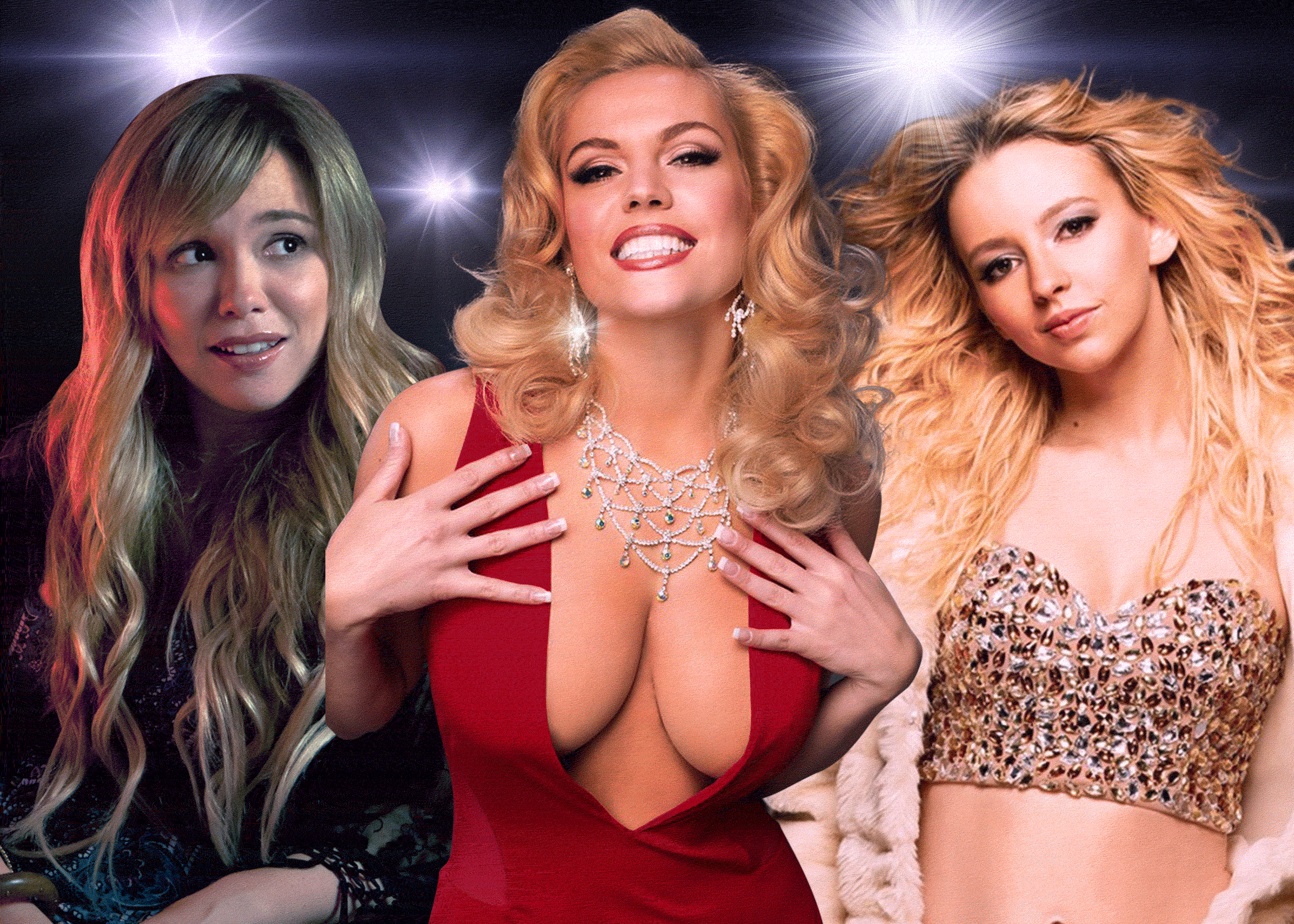
Philippa Snow investigates the thrilling ingredients of Lifetime’s campy, celebrity downfall biopics.
Culture
Words: Philippa Snow
Artwork: Jonathan Amaya
Four scenes I have recently watched in film biopics, equally matched in melodrama, and equally tinged with camp: a young gold digger wearing a white wedding dress to her nonagenarian sugar daddy’s funeral, howling a sinister a capella version of The Wind Beneath My Wings with her kid son; a dying actress in the shower, held pietà-like by her disreputable husband and her cancer-stricken mother, killed by pills and toxic LA mould; a pop star in an obvious, coal-black wig, distraught and crouching on Mulholland Drive, holding her Yorkshire terrier and begging for the mercy of a hungry crowd of paparazzi; the wife of a murdered husband, stoned with grief, peeling a pair of flimsy and ensanguined stockings down her calves before retiring to bed, like Lady Macbeth in a candy pink designer suit.
The first three vignettes are from Lifetime movies about Anna Nicole Smith, Brittany Murphy and Britney Spears, respectively. The last is from director Pablo Larraín’s 2016 film about the bereavement and subsequent quiet and crackling madness of Jacqueline “Jackie” Kennedy, a legitimate biopic as close to something made by Lifetime in its affect as it is feasible for something of its pedigree to be. (It helps that Jackie, as played by Natalie Portman, has the air of a Jacqueline Kennedy impersonator, the real Kennedy’s hauteur exaggerated into something closer to pastiche.) All four appear too steeped in symbolism and emotional excess to be drawn directly from life, making it wild that Smith actually wore her wedding dress to the 90-year-old J Howard Marshall’s funeral, that Murphy really died from a mixture of literal and figurative toxicity, that Spears really permitted herself to be photographed curbside at night in LA, unkempt and afraid, and that Jacqueline Kennedy wore her blood-spattered bouclé suit to sign in Lyndon Johnson as the President.
Truth can be hammier than fiction, making biopics about very specific kinds of women difficult to sell in Hollywood, and easier to make for television. Jackie, nominated for three Oscars and described as “compelling,” “intelligent,” and “mesmeric” by critics, is a notable exception whose curious, fleeting popularity with straight male commentators circa 2016’s awards season did not quite disprove the rule.

The Anna Nicole Story (2013)
“I love Jackie,” the producer Marie Bardi tweeted recently. “But I also like that my boyfriend hates Jackie. Some things (especially things about women) feel so personal to me that it seems disingenuous when straight guys try to voice their support…I also don’t need straight guys to “validate” camp or melodrama, either.”
“People [look down on] melodrama,” the director Mary Harron echoed, in an interview with Vice about her decision to work with Lifetime on The Anna Nicole Story. “Why is [female melodrama] looked down on, and other things are cool? Forms that are looked down on like female melodrama have a lot of energy in them – tons of people watch Lifetime movies!”
As a pop culture trilogy, The Anna Nicole Story (2013) and The Brittany Murphy Story (2014), both of which documented the downfall and the subsequent death of young, famous women, and Britney Ever After (2017) – which chronicled the downfall of the still-living Spears with little enough care that it seems halfway possible its writers believed she actually did die in 2007 – create something like a subgenre: that of the lo-fi biopic devoted to a woman who is notable not because of her singular or supernatural talent, but because of the explosive combination of her everywoman charm, and her extravagant and lethal or near-lethal suffering.
Britney Spears is a consummate pop star; Brittany Murphy was an actress good enough that Roger Ebert believed her to be the modern Lucille Ball; and Anna Nicole Smith was an extraordinary beauty. Still, each of them had her own flaws, her own tendency towards eating bad food, loving bad men, having bad skin. Each had been the girl next door, in Kentwood, in Atlanta, and in Houston. Each remained a woman you could picture waitressing, working in a strip club or the office of a telemarketer, but better, blonder: polished like a Cadillac, as eager to please as a desperate child. None of them was Jackie Bouvier, bred like a racehorse to marry a president and then the shipping heir Ari Onassis, which may explain why their biographies do not make Oscar bait.
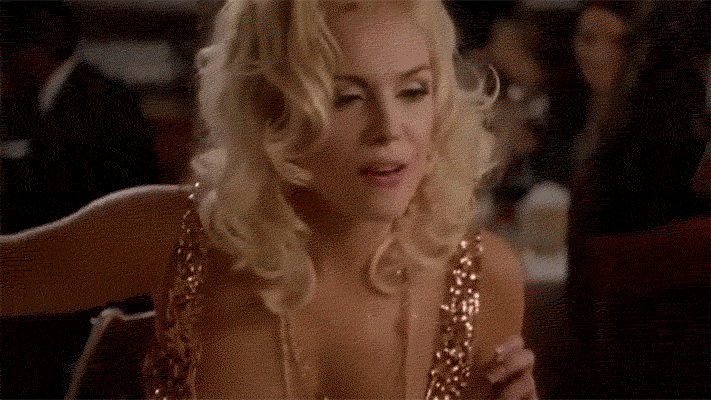
The Anna Nicole Story (2013)
It is possible to argue that there is no better medium for documenting this specific brand of fame and premature death than the Lifetime movie, with its flattening approach to dialogue and its haute camp visual style. In Lifetime movies, people speak in platitudes as simple as the ones they use in gossip magazines, so to call what’s said on screen “foreshadowing” feels as much of an understatement as describing Anna Nicole Smith as “buxom”. (She was a 36DD.) In an early scene in Britney Ever After, Britney’s manager tells her to “smile, like ‘I’m dreaming about boys, but I’m saving myself for Jesus.’” In The Brittany Murphy Story, a paparazzi photographer asks Murphy’s husband who exactly killed Brittany Murphy, and he answers: “You did.” Like an InTouch cover fabricating quotes from anonymous sources broad enough that they are able to survive without citation, all three screenplays leave no room for audiences to experience revelation. Operatic in their tragedy and advertisement-like in their conveyance of a strict, traditional code of morality, they have the empty, sick-making appeal of junk food.
In the case of Britney Ever After, the most notable omission in the movie comes as a direct result of the second-most notable omission: over a runtime of 120 minutes, not one track by Britney Spears plays, a consequence of her refusal to “contribut[e] in any way, shape, or form…or [give] her blessing” to the film’s retelling of her life. What results is a film centred around someone who does not resemble Spears, who does not dance like Spears, and who is never seen to sing a note of Spears’ music, the effect one of uncanny distance from our actual planet. Here is an alternate universe in which Britney is a gangly Australian, in which there is no …Baby, One More Time, or Toxic. It may be an alternate universe, too, where Britney Spears’ life is authored by Tennessee Williams. (“Ah don’t want mah baby wearin’ no damn hooker clothes!” her father rages, the Louisiana heat of him threatening to detonate.)
“Sometimes I wake up in the morning,” the un-Spears of Britney Ever After says, about her 2007 breakdown, “and think that everything that happened last year was a dream, or something. And I feel relieved. But then I realise that it was all real. Everything just got all…smashed up.” As the narrative is in her mind, so it is in her movie: real life, already appearing dreamlike and at a remove, is reconfigured into something that is at once alien and familiar.
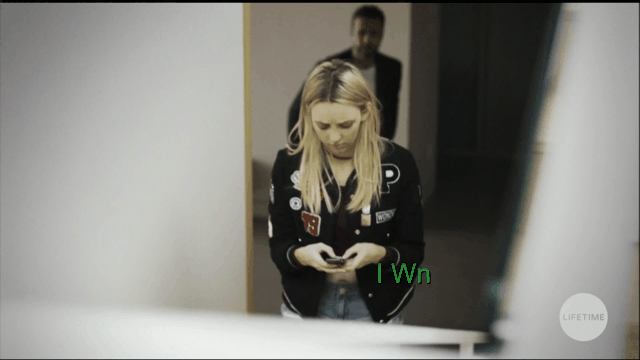
Britney Ever After (2017)
And isn’t the fame portrayed in these biopics both alien and familiar, too? Witness the ascent of Brittany Murphy in The Brittany Murphy Story, the least interesting and most generic of what might be called the channel’s Perez Hilton Trilogy: her rise to stardom feels predestined only because there is no mystery in the outcome. To see the real Brittany Murphy in her first audition may have been to witness magic – to identify what Ebert called “a kind of divine ineptitude,” a “dizzy lovability” – but the magic does not transfer here, making the success of the fictional Murphy seem more luck than fate. Making a film about a comic actress this self-serious, devoid of any humour, is at least a little funny. In most Lifetime movies, there are instances of mordant wit, even in times of heavy drama. Britney Spears, deciding to leave Kevin Federline, is shown informing him of her decision with a text-message that says, perfectly, “I WNT 2 DVRCE U”. “It would be an honour,” Anna Nicole’s lawyer-and-then-lover Howard K. Stern tells her, watching shrimp fall from her slackened mouth at dinner in an upscale restaurant, “to represent you.”
“If I’d written [The Anna Nicole Story],” Harron admitted, in that interview with Vice, “it probably would have been a little bit darker and have less public appeal. But I thought it was an interesting script. It wasn’t like a normal TV script – it was kind of wild. It was very ambitious. It had a sense of humour, which I liked.”
Press around The Anna Nicole Story tended to reiterate the director’s connection with another character as psycho, all-American and in love with the capitalist dream as Anna Nicole Smith, the fictional killer of women and investment banker, Patrick Bateman. Harron had begun her career with a biopic of the SCUM Manifesto author Valerie Solanas, making the progression from a would-be-killer of the male sex to a destroyer of the female sex a lateral move. In Smith, the director has squared the circle with a maneater, a victim of the male gaze with an eye for monetising her desirability until it killed her.
“There’s a thousand people I could try to blame,” Smith monologues in voiceover, in the back of a limousine and speeding towards death. “Howard K. Stern for putting me on that stupid reality show. My mama, for not letting me go bowling. My dad, for knocking down doors he shouldn’t have. E. Prick [Howard Marshall’s son, E. Pierce] for being a prick. I could try pointing a finger at Hefner for founding Playboy, or Letterman for mocking me. Kodak for making a camera. The doctors who prescribed all the pills I took. I’d love to call them all guilty. Let myself off the hook. But if I’m looking for the real culprit for what I let happen to my own flesh and blood, mirror’s where I got to begin, middle and end.”
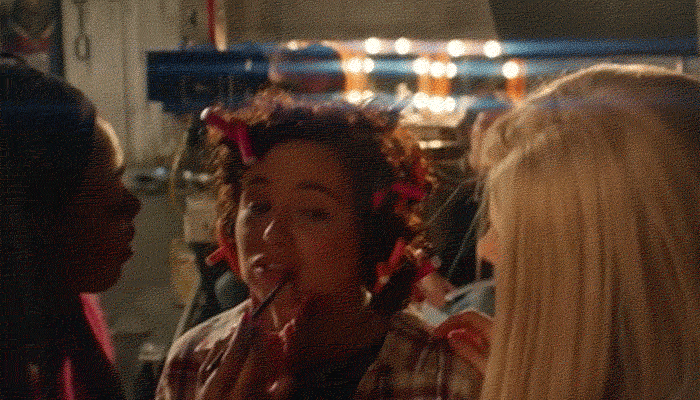
The Brittany Murphy Story (2014)
It is hard not to think of Patrick Bateman, whose exhaustive beauty routine necessitates a great deal of time spent with the bathroom mirror, and whose capacity for self-reflection extends only to the realisation that there is no there there. “There is an idea of a Patrick Bateman,” Harron has him drone over a shot in American Psycho where he peels off a literal mask, “some kind of abstraction, but there is no real me, only an entity, something illusory, and though I can hide my cold gaze and you can shake my hand and feel flesh gripping you and maybe you can even sense our lifestyles are probably comparable: I simply am not there.” The problem with women like Anna Nicole Smith and Britney Spears, and to a lesser extent with an actress as atypical and “real” as Brittany Murphy, is that they eventually prove too there, not illusory enough.
In The Brittany Murphy Story, Murphy’s inability to be as slender as her co-stars without pills is her undoing. In The Anna Nicole Story, it is Smith’s unhinged commitment to being “the international celebrity and balls-to-the-wall party girl Anna Nicole Smith” that makes her first too much for public life, and then too much to live. The Britney Spears of Britney Ever After ruins her untouched and untouchable public image for the sake of men who tell her she’s “da bomb,” or have the nickname “meatpole,” or who have nothing at all in common with her other than being from Kentwood, and reminding her of home.
These kinds of tragedies do not possess the great, epoch-defining arcs that make a biopic about a Johnny Cash, a Judy Garland or a Marilyn Monroe, but are instead full of the minor-key vicissitudes suffered by regular civilian girls, plus fame. Lifetime, whose bread and butter is in making horror movies for the mothers of suburban, wayward daughters, have succeeded in producing three new classics of the genre: too “fat,” too full of love or lust, too loud and too outclassed by peers who did not come from Queens or from the trailer park, these women’s famous names do not entirely distinguish them from the protagonists of Mother, May I Sleep With Danger?, or Fifteen and Pregnant, or Too Young To Die. Each star was first made famous by a kind of catalysing coup de foudre, first on the behalf of some male producer or executive, then on the behalf of America itself, the bloom rapidly wearing off the rose in the way that blooms tend to do. In each case, “an entity, something illusory” remains; the living girl behind it either dies, or fades away so that it is no longer simple to discern what is illusory, and what is real.
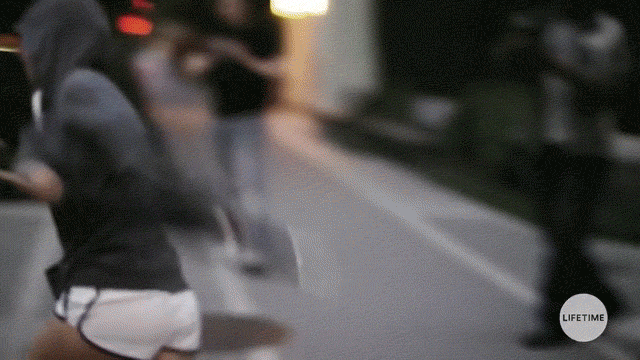
Britney Ever After (2017)
It is equally difficult to tell in Lifetime’s biopics what “realness” means, the storylines ripped from the headlines, and the staging farcical enough to keep us guessing. I had to look up whether Spears really began her ill-fated performance at the VMAs in 2007 with the words “if you’re looking for trouble/look right in my face,” but obviously she did – truth, as well as being both hammier and stranger than mere fiction, is also sometimes more ironic, too much to bear without the veneer of bad camerawork or obvious dialogue. In Britney Ever After, that appearance at the VMAs plays out on what resembles a ten-foot-by-ten-foot platform, barely registering as more than a local talent show. In the real clip, Spears is so evidently on a huge stage, and perhaps on something else besides. There is a cutaway, not long into the song, to the face of Rihanna in the audience: she looks at Britney, smiling her encouragement, but in her eyes there is a note of such tenderness, such distress. There will not be a Lifetime film about Rihanna; even Chris Brown could not make it so. She is unflattenable, too cool and too unlike us to be a tragic everygirl, and too successful to be anybody’s cautionary tale. Rihanna will earn a real biopic, or live a life that never ends up being filmed at all.
As it happens, in a Twitter Q&A in 2013, Britney Spears was asked which actress she would most like to portray her in a movie, and instead of choosing someone blonde and bubbly and hyper-heterosexually hot – Scarlett Johansson, say, or Margot Robbie – she surprised her fans by saying that she’d like to be played by Jackie Kennedy herself, Natalie Portman. Perhaps Spears had seen her appear in Black Swan in 2010, as a woman driven to destroy herself by the desire to perform, or in Leon: The Professional at 12, a sweet Lolita character whose proto-sexual subtext turned out to be less “sub” than it first appeared. She may have recalled the time that the two tried out for the same off-Broadway play, a camp farce about a 10-year-old girl ready to commit murder in the name of making it as a singing and dancing star. It is hard not to wonder whether, last year, she ended up seeing Vox Lux, a terrorism-meets-pop pseudo biopic by a millennial director, Brady Corbett.
“When people talk about the early part of the new century,” Corbett mused to The Scotsman, “I think that they are going to talk about school shootings, terrorism, 9/11 and, in equal measure, they will talk about Britney Spears.” Vox Lux’s pop star, drug-addicted and as feral as a cartoon hillbilly, is played by – duh – Natalie Portman. “They wanted a show,” she tells her manager, lazily, in the film. “I gave them a show.” This line of dialogue is, it has only occurred to me now, the perfect strapline for a Lifetime biopic.

